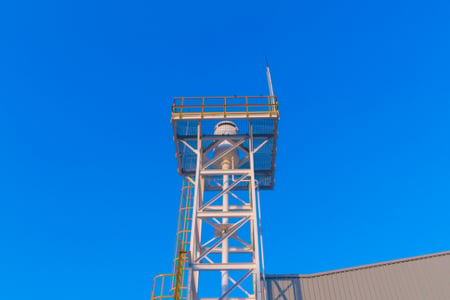How Forestry Professionals Choose the Right Tree Marking Paint
Revolutionizing Forestry Management with HIGHBALL® Tree Marking Paint's One-Pass Marking System
This Section Covers Resources
Revolutionizing Forestry Management with HIGHBALL® Tree Marking Paint's One-Pass Marking System
When metal components face sustained or cyclic heat, the choice of coating can determine how long they last before corrosion,...
Coating failures on exhaust systems, silencers, and other heat-exposed steel components are more than a cosmetic issue. They can shorten...
This Section Covers Resources
Revolutionizing Forestry Management with HIGHBALL® Tree Marking Paint's One-Pass Marking System
When metal components face sustained or cyclic heat, the choice of coating can determine how long they last before corrosion,...
Coating failures on exhaust systems, silencers, and other heat-exposed steel components are more than a cosmetic issue. They can shorten...
This article provides a basic understanding of typical contexts where exterior high temp paint is used, high temp paint chemistry, and differences between exterior and interior high temp paints.
What Types of Exterior Equipment Utilize High Temperature Paint?
Equipment with components that operate at temperature is at higher risk for corrosion due to uncontrolled temperature, humidity, and sun exposure when used outdoors. The high temperature paint used on exterior equipment must be formulated to withstand elemental exposure and survive peaks during operation throughout environmental temperature fluctuations.
Exterior industrial silencers, furnaces, incinerators, exhaust piping, heated pipes, and smoke stacks are prominent types of high temperature equipment that may be permanently installed in a manufacturing or processing facility. These exterior features may require periodic coatings maintenance to prevent corrosion. A high temperature paint with exterior-grade binders and pigments can hinder fading, flaking, and chipping and reduce the maintenance needs of these large and possibly difficult to reach pieces of industrial equipment.
Exterior high temperature resistant coatings may also be used as exhaust paint on mobile equipment such as ATVs, motorcycles, and agricultural equipment exhaust. In these scenarios, the part may be subjected to impact as well as extreme temperature changes such as contact with snow or ice during use. The coating must be able to withstand the shrinking and expansion of the substrate along with impacts due to motion and environments that include rocks, slush, and other abrasive materials.
What are the characteristics of a high temperature paint?

Temperature resistance is achieved through a silicone-based resin system and other pigments and additives engineered for continuous or peak operating temperatures. Conventional components of industrial paint completely oxidize at high temperatures and the resulting exposed substrate invites corrosion.
High temperature paints are available in a range of temperature ratings, which should be considered when choosing a product. The pigments and binders are chosen to perform at specific temperatures. The siloxane bonds in high temperature paint crosslink when heated above 400°F. The result is increased scratch resistance when compared to the uncured product. Due to higher hardness or brittleness that comes with crosslinked molecules, the impact tolerance of the cured high temperature coating may be lower than an uncured coating. Impact and scratch resistance should be carefully considered when choosing a coating be used for mobile exterior applications such as exhaust systems, vehicles, or mobile machinery.
What are the performance characteristic ranges of an exterior high temperature paint?
The temperature resistance of exterior high temperature paint ranges from 600° F to 1200° F. Applications with temperature ranges exceeding 1200° F continuous temperatures should consider a ceramic coating technology or stainless steel.
Exterior exposure may limit the color and chemistry options available. In medium temperature exterior use cases that range from 300° F to 800° F, a wide range of exterior high temp paint colors are available. The colors available to exterior use cases above 800°F are more limited, but black and silver finishes are available that withstand up to 1200° F. Gloss finishes have difficulty maintaining even texture and shine as temperature increases.
Download the below guide for technical information about exterior high temperature paint options.
Why is zinc a common component of exterior high temperature paint?
Zinc is a sacrificial corrosion inhibitor. If a crack, scratch, or other compromise forms in the film integrity of the coating, the zinc component will corrode instead of the metal substrate. Many exterior high temperature paint formulations offer a zinc additive for extra corrosion prevention. You may also add a zinc based primer designed for temperature resistance to your coating system for extra prevention.
Most interior high temp paint formulations do not include this extra anti-corrosive element. These coatings are built to withstand frequent temperature changes and maintain appearance and functionality, but do not have the increased pressure of environmental factors.
Exterior High Temperature Paint vs. Exterior High Temperature Powder Coatings.
High temperature paint is available in both solvent-based formulations and high temperature powder coatings. Typically, a manufacturer will either have a liquid or a powder coating operation established. A coatings job shop may be equipped to apply both types of technology. Some benefits of solvent-based coatings are easy application with various types of spray equipment, dry to handle at room temperature, and more forgiving to poor substrate prep. Some particular benefits of a high temperature powder coating is durability and hardness as well as the regulatory boon of zero VOCs. Both high temperature powder coatings and high temperature liquid paint can be touched up with a high temp aerosol, which makes maintenance of either easy for the long term.
Ready to find the right coating for you?
speak to a Coatings expert 1-800-537-7201



Copyright © Forrest Technical Coatings. All Rights Reserved
Site Created by Cayenne Creative